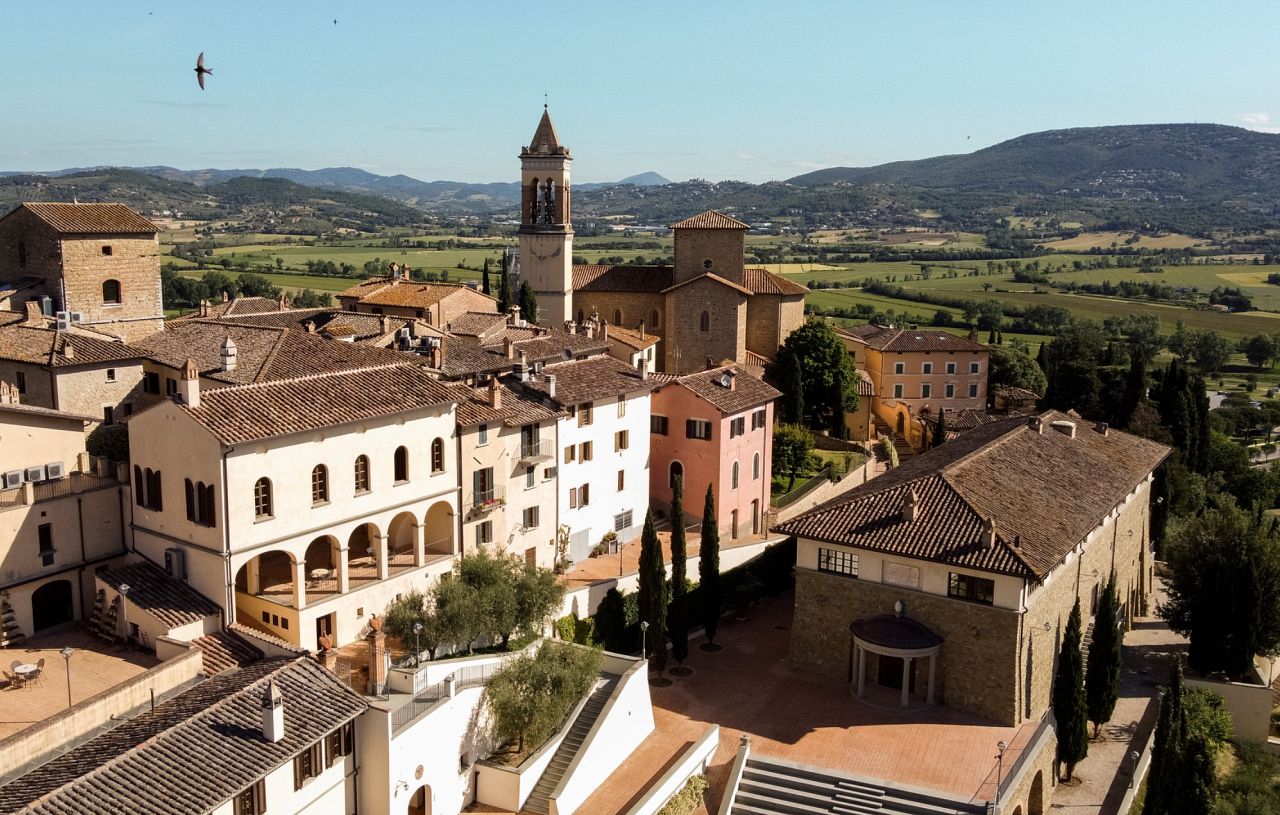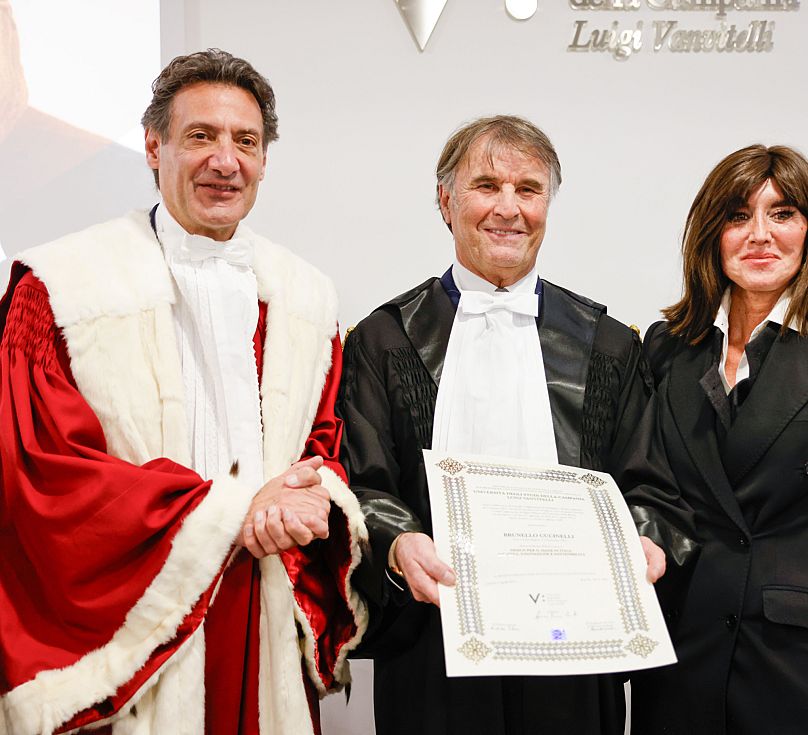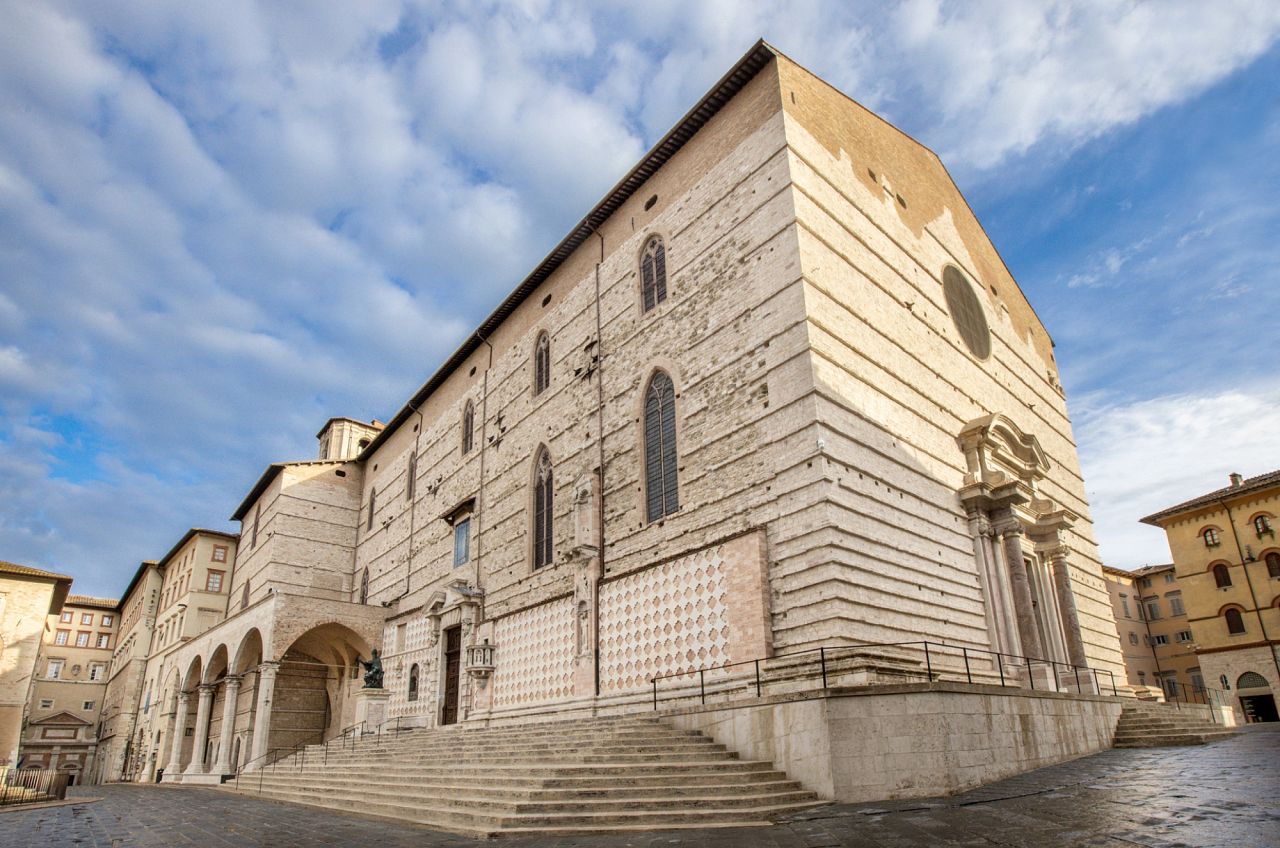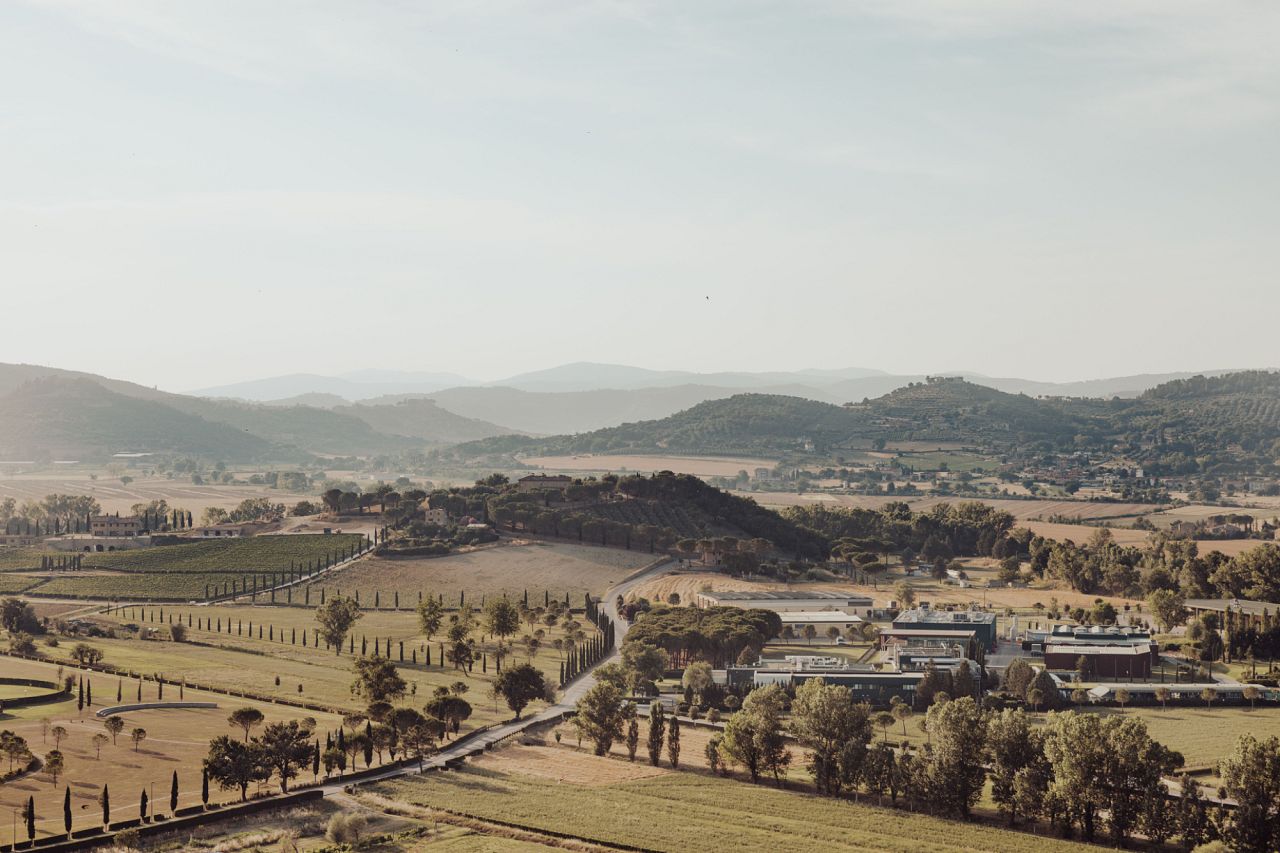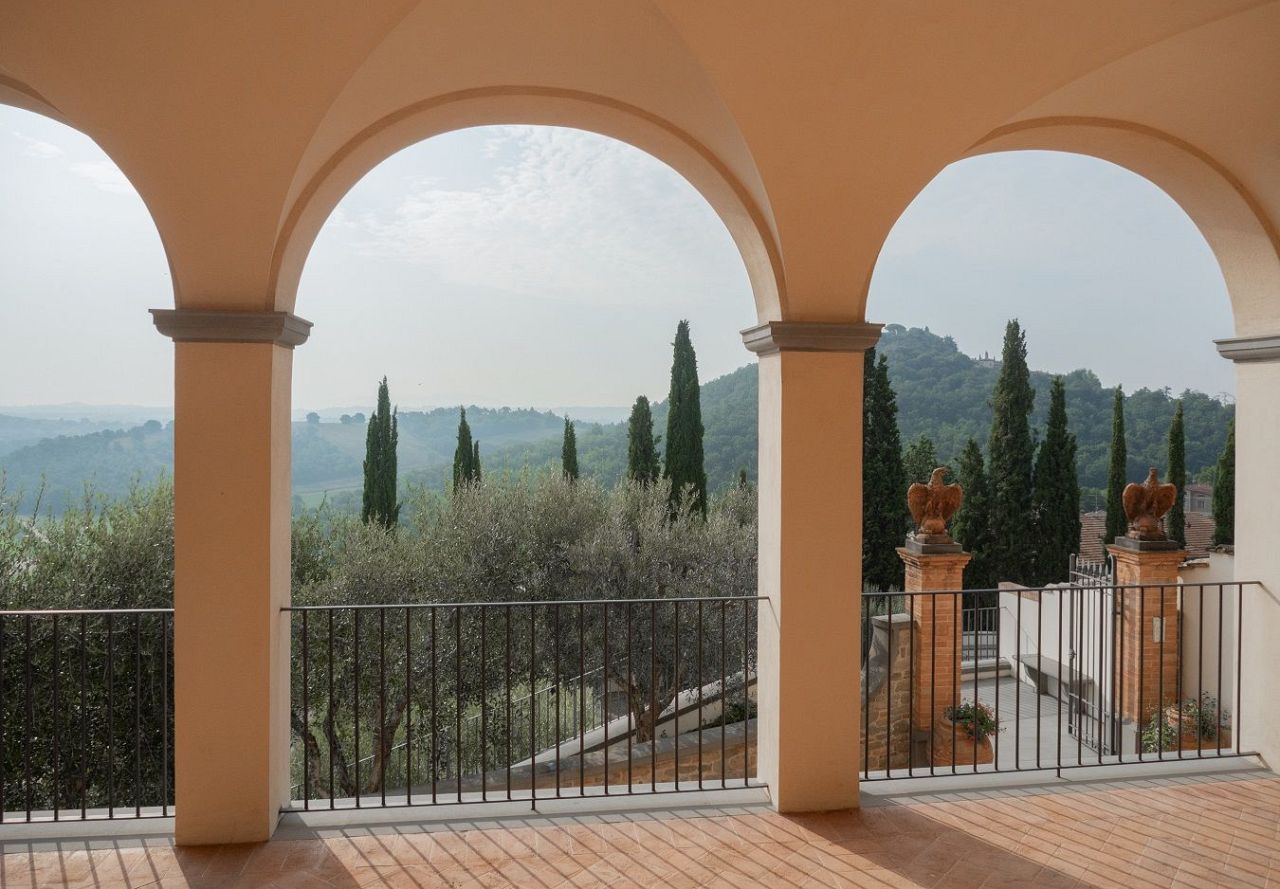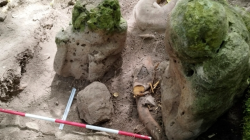“When constructing, let’s aim to create something that will last for eternity,” stated the Italian fashion designer.
Brunello Cucinelli
At an event marking her status as the inaugural recipient of an honorary doctorate in “Design for Made in Italy: Identity, Innovation, and Sustainability,” she quoted the esteemed English polymath John Ruskin.
The identical quotation is engraved on a plaque located in the heart of Solomeo, the village where Cucinelli established his family’s base, as well as his company and spiritual center since 1985. This once-dilapidated spot atop a hill amidst the picturesque Umbrian landscape was meticulously rejuvenated through investments from the Cucinelli venture over time.
This recognition comes from his honour at the University of Campania, where a collective body of universities and experts in architectural fields have come together. Additionally, this accolade extends its reach into the adjacent Umbrian area. This marks the inaugural instance of the designer being bestowed with such an award.
architecture
.
In 2010, the designer known for his opulent cashmere apparel, along with his spouse, founded the Fondazione Brunello e Federica Cucinelli. This foundation has exerted considerable and enduring influence over the Umbrian area.
Characterized by picturesque medieval villages, monasteries, and verdant landscapes, the Italian region attracts many tourists and couples looking for their ideal getaway; however, maintaining numerous historical landmarks poses significant challenges. “It is my strong conviction that we have an obligation to protect this heritage,” states Cucinelli. “Without our past, we risk losing our identity. Additionally, conserving history provides a solid foundation for shaping the future.”
Strolling through Perugia, the region’s capital, you might not see the Cucinelli name etched into plaques or emblazoned across buildings, yet their impact permeates throughout. This can be seen in the vibrant pink hues of the ancient Roman inscription adorning the city’s iconic Etruscan arch landmark; this feature had previously eluded modern eyes until the Cucinelli Foundation brought it back with restoration efforts in 2014. Their contributions also shine brightly within the elegantly renovated interior spaces of the Morlacchi theater, ensuring continued access for locals after receiving support in 2017, as well as evident from the refreshed facade of the cathedral they aided in updating in 2022.
In 2018, Brunello Cucinelli offloaded a 6% stake in his namesake business to inject another €100 million into the foundation. Among the foundation’s present initiatives are developing a library in Solomeo and restoring the historic town of Castelluccio di Norcia, which suffered damage from an earthquake back in 2016.
Several Italian fashion brands have played a role in revitalizing their nation’s historical sites. Fendi provided €2 million for the refurbishment of the Colosseum.
Trevi Fountain
In 2013, Salvatore Ferragamo refurbished a section of the Uffizi Gallery in 2015, followed by Bulgari sponsoring restoration efforts there.
Spanish Steps
in 2016.
While these projects are necessary and worthwhile, there’s something particularly special about Cucinelli’s ongoing work on a local level in the region he clearly loves so deeply. The projects also go beyond preserving history, with many having tangible benefits for the wider community too. Culture, education and spirituality are at the heart of many of them. “I have learned that architecture is made for mankind,” he explains.
Brunello Cucinelli was born in the countryside of Umbria, specifically in the small village of Castel Rigone, roughly 20 kilometers away from Solomeo. As teenagers, he encountered his future spouse, Federica, who hailed from Solomeo. The pair established their residence in this hamlet where approximately 700 people currently reside. This same community now houses their two daughters, Camilla and Carolina, alongside their spouses—who are part of the business—and their grandchildren as well.
Nestled in the valley beside the small village lies the Brunello Cucinelli factory and office complex, employing approximately 700 people. These spaces are well-lit and spotless, featuring expansive windows that offer views of meticulously maintained gardens and the picturesque landscape beyond—a privilege not often experienced by those working in urban industrial buildings. Employees enjoy a lunch break lasting ninety minutes during which nobody opts to eat at their desks; instead, they take this opportunity fully before resuming work until quitting time without fail. “This period is essential for nurturing the spirit,” remarks the founder. In fact, even within his household, discussions about corporate matters are strictly off limits during mealtimes.
Cucinelli is known as “fashion’s philosopher,” and his address at the University of Campania Luigi Vanvitelli was peppered with insights from prominent philosophers such as Kant, Saint Francis, Saint Benedict, Xenophanes, Emperor Hadrian, and numerous others.
Driven by his personal ideology of “humane capitalism,” he differs from typical capitalists as he envisions long-term possibilities. The historic workshops within the firm’s premises in Solomeo are preserved such that they can easily be converted back into living quarters if the business outgrows their necessity.
Currently, these areas are being utilized to educate upcoming generations of craftsmen. “My worry isn’t about who will purchase luxury items down the line; my concern lies with who will create them,” states Cucinelli. Established in 2013, the School of Contemporary High Craftsmanship and Arts provides programs aimed at bolstering the company’s production capabilities through courses like pattern making, tailoring, and repair work. Additionally, they offer training in fields including horticulture, landscaping, and stonemasonry—disciplines he deems essential for preservation within society at large.
Since Brunello Cucinelli took the company public in 2012, its market valuation has surged from €530 million to €6.5 billion—a realization of every entrepreneur’s aspirations. Yet, it’s evident from his actions throughout these last 15 years that his ambitions extend far beyond mere commercial triumphs, transcending even the lifespan of both the corporation and himself.
As he receives his honorary doctoral degree in architecture, he reflects on his firm’s journey while urging everyone present to contemplate the consequences of their deeds with these words: “The future isn’t entirely within our control, yet neither does it lie completely beyond us.”


